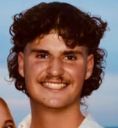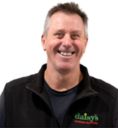Stepping stones are not just a functional addition to gardens and lawns, but they also add aesthetic appeal. Whether you're aiming for a straight path or a winding trail, laying stepping stones is a simple task that can be accomplished in a day. Here's how:
1. Planning and Mapping Out Your Path
- Start by deciding the route of your stepping stone path. Consider the natural flow of foot traffic and the overall design of your garden.
- Lay the stones on the grass in the desired pattern. Adjust the spacing to fit a natural stride, ensuring that you can easily step from one stone to the next. For a more natural look, you can vary the spacing or even create a winding path.
- Once you're satisfied with the layout, mark the position of each stone. This can be done using a half-moon lawn edger or a simple garden tool.

2. Preparing the Ground
- Move each stone aside and cut out the marked sections of turf using a garden spade.
- Dig down to a depth slightly greater than the thickness of the stone. This ensures that when the stones are laid, they will be flush with the ground, making it easier to mow the lawn without damaging the stones or the mower.

3. Setting the Foundation
• Before placing the stones, prepare a foundation to ensure they remain stable. A common method is to use a layer of sand.
• Spread about 50mm of sand (we recommend our washed concrete sand or crusher dust can also be used) in each hole. This not only provides a stable base but also ensures that the stones lie flat and are at the same level as the surrounding grass.
• Tamp (ram or pack) down the sand to create a flat and firm foundation.
NOTE: Adding a layer of sand is only recommended for 30mm thick pavers/stepping stones, lay thinner stones on a bed of mortar
4. Laying the Stones
• Place each stone in its respective hole. Ensure that it sits evenly and is stable.
• To make sure the stone is set at the right height, you can place a cane (a straight, slender stick or rod that can be used to check the level or height of the stones) or a straight edge over it. The stone should sit slightly below the level of the surrounding grass.
• Once all stones are laid, fill any gaps around them with a mixture of sand and soil. This helps the stones to bed in and look more natural.
• For a finishing touch, you can sow grass seed around the edges of the stones. Over time, the grass will grow, further integrating the stones into the lawn. Alternately, if making a stone and pebble pathway spread pebbles evenly around stepping stones to achieve even look measuring height to equal the depth of the stones.


5. Maintenance and Care
- Stepping stones require minimal maintenance. However, it's a good idea to check them periodically to ensure they remain level and stable.
- If any stones become loose over time, simply lift them and add more sand or stone dust underneath to stabilize them.
Choosing the Right Stepping Stone:
When it comes to enhancing the beauty and functionality of your garden or outdoor space, choosing the right stepping stone is crucial. Not only do they serve a practical purpose, but they also play a significant role in the overall aesthetics of your landscape. Here, we introduce you to Daisy's stepping stone products, which are renowned for their quality, durability, and elegance.
1. Natural Bluestone Steppers
Our Natural Bluestone Steppers are a testament to elegance and practicality. Sawn from large bluestone boulders, these stepping stones boast organic shapes that seamlessly blend with nature. At a thickness of 30mm, they are easy to install, requiring no concrete or additional support. Their earthy appearance, combined with their durability, makes them an excellent choice for any outdoor setting. Available in various sizes:
2. Beech Limestone Stepping Stones
Elevate the charm of your garden with our Beech Limestone Stepping Stones. These stones, sourced from premium boulders, are designed to endure the elements while retaining their beauty. Their light cream hue offers a sophisticated touch, and their slip-resistant surface ensures safety. Ideal for various outdoor settings, these stones are a blend of style, safety, and durability. We offer delivery across Melbourne and Geelong, making it easier for you to beautify your spaces.
3. Black Limestone Stepping Stones
For those who prefer a bolder aesthetic, our Black Limestone Stepping Stones are the perfect choice. Crafted from high-quality boulders, these stones are built to last. Their deep black shade adds a touch of sophistication, and their slip-resistant surface ensures safety in various outdoor settings. Like our Beech Limestone Stepping Stones, we deliver these across Melbourne and Geelong, ensuring you have access to top-quality landscaping materials.
Conclusion Laying stepping stones is a straightforward DIY project that can enhance the beauty and functionality of any garden or lawn. With the right tools and materials, you can create a path that not only serves a practical purpose but also adds charm to your outdoor space.
Sources: BBC Gardeners World Magazine, This Old House, Gardeningetc.
About the Authors:

Harley Thompson
Harley is a second-generation journalist with a passion for gardening and a keen eye for detail. Currently studying a double degree of Commerce and International relations at Monash University, Harley loves learning new things. He specialises in creating engaging content about garden advice, using experience in store, with our team and customers. His writing blends his academic knowledge with practical experience, offering informative and inspiring articles.

Greg Fitzgerald
Greg Fitzgerald is a qualified horticulturalist with more than 30 years in the industry and 16 years at Daisy's Garden Supplies. He manages production and procurement for all our products, ensuring high-quality gardens and landscapes for our customers. His vast experience and expertise in horticulture make him a key asset to Daisy's. He offers valuable insights and a wealth of knowledge in terms of mulches, soils, pebbles and rocks, composts and many other products.